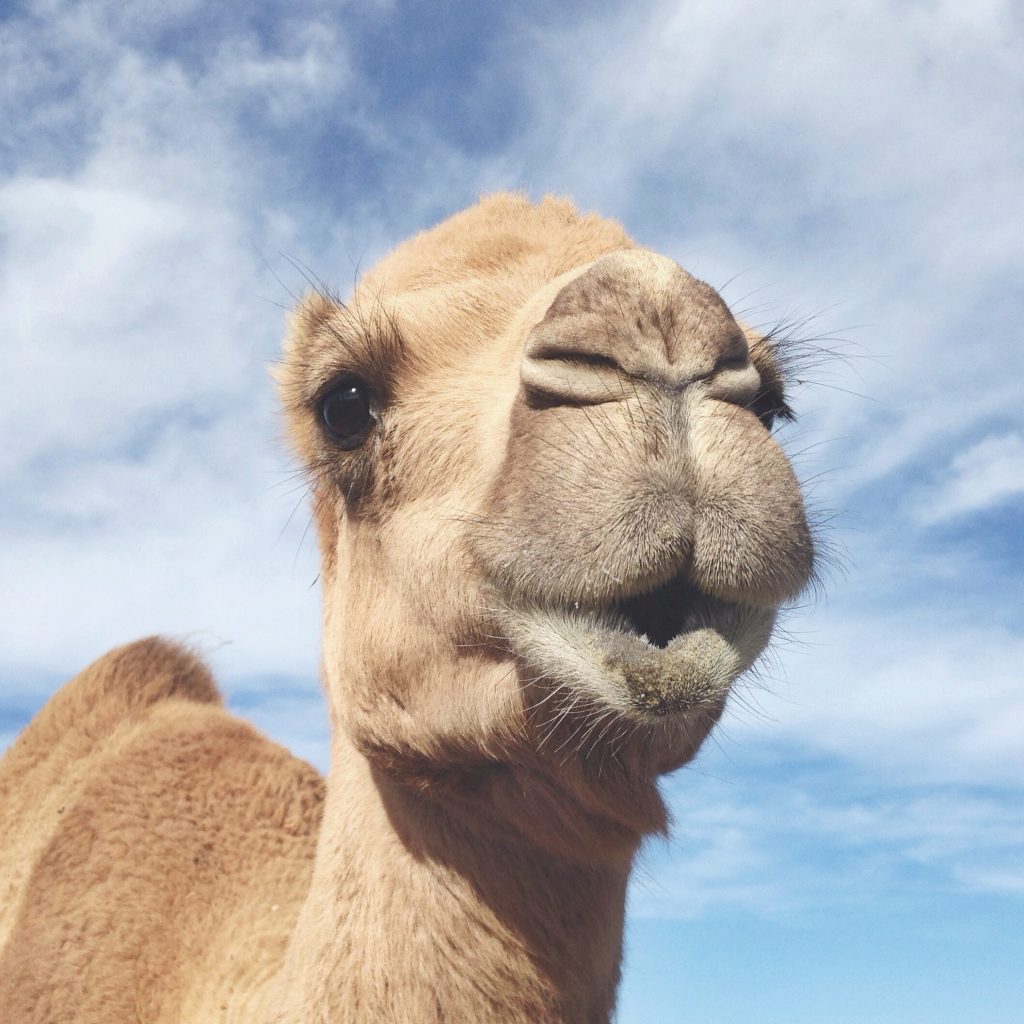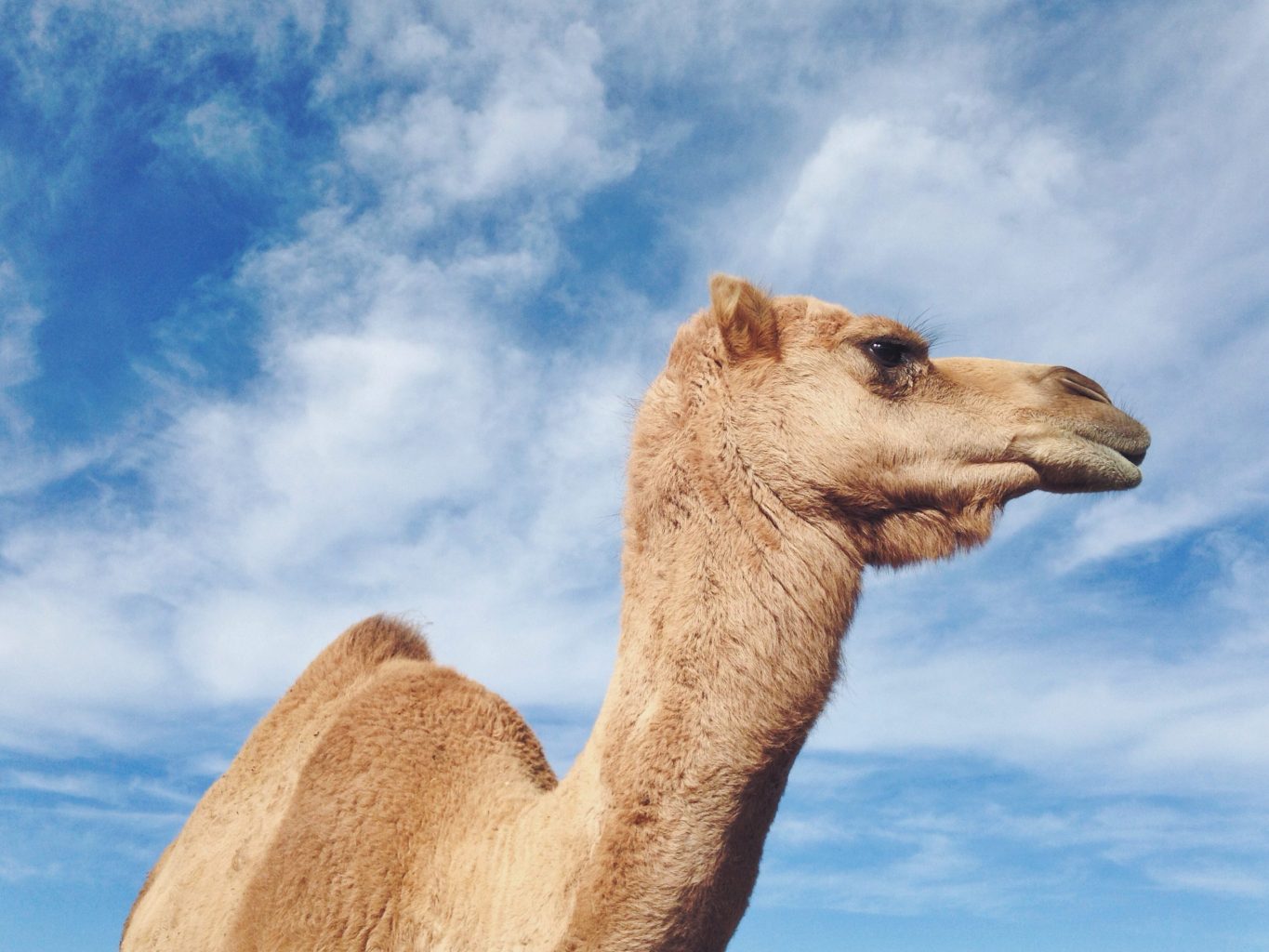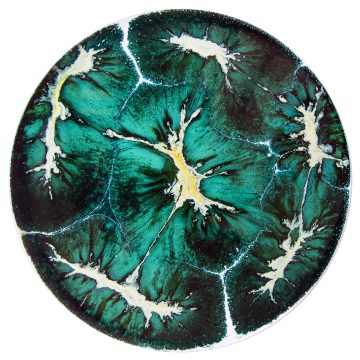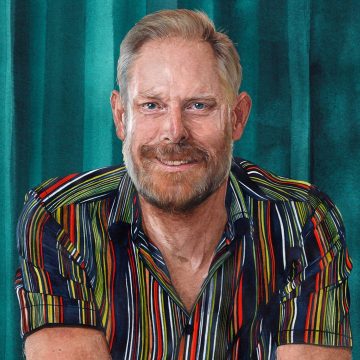The Cambridge-Africa partnership in action
In northern Kenya, camels are vital to the economic and social fabric. Any threat to herd health can destabilise communities – and the nomadic way of life. So when camels started to get sick, action was needed.
On the dry plains of Laisamis, northern Kenya, Dr Joel Ltilitan Bargul is surrounded by an interested group of farmers and their camels. Using a microscope, he invites the farmers to inspect a pre-prepared sample of camel’s blood and say what they see. “Something’s running around,” says one. “That’s the parasite which is causing your camels to be ill,” replies Bargul. “That’s why we need to check each camel and treat the ones which have the parasite.”
But this is no field trip into unfamiliar territory for Bargul: this is home. Herding his father’s goats and camels as a child, Bargul saw first-hand the devastation that parasites can wreak on communities like these. Long droughts mean there is no arable land here: the rainy season lasts for just a few days a year. Few children go to school – the nomadic Rendille people of northern Kenya live in homesteads during the rainy season, then the men and older children take their livestock and go in search of pastures. This livestock is their livelihood: cattle, goats, and, most importantly, camels – highly prized as a source of income, milk, meat, hides, transport and social capital. Ticks and pests such as biting flies are a constant threat to their productivity.
Herding his father’s goats and camels as a child, Bargul saw first-hand the devastation that parasites can wreak on communities like these.
Bargul’s mother insisted that he go to school, against his father’s wishes, walking him the three kilometres there and back every day. “I was out of school for protracted periods of time to engage in livestock herding duties as my father preferred – but my mother ensured I got back,” he remembers. “At that time, both parents, like many people in the community, lacked clarity on the importance of education. My three sisters did not go to school as it was perceived to be a waste of money, while my youngest brother had to take over the herding when my elder brother had his leg amputated due to a chronic infection and could not walk far. I am the only one in my family who went to school.”
His schooling marked the start of a journey which, today, has brought him full circle. Now a lecturer at Jomo Kenyatta University of Agriculture and Technology (JKUAT), and a recipient of a THRiVE-2 post-doctoral fellowship from Cambridge-Africa, he has made it his life’s work to understand more about how parasites are transmitted – and attempt to fight back. And he is bringing that knowledge home to communities such as Laisamis.
Bargul studied biochemistry, graduating top of his class. He decided to focus on understanding how neglected tropical diseases are transmitted, by studying the interactions between disease pathogens, the insects that spread them, and the animals which host them. During his MSc and PhD research studies at JKUAT, the International Centre of Insect Physiology and Ecology (icipe), the University of Guelph, Canada, and the University of Würzburg, Bargul homed in on that scourge of East Africa: the trypanosomes parasite.
These parasites transmit sleeping sickness (African trypanosomiasis) to humans – which can be fatal if not treated – and the equally unpleasant animal disease trypanosomiasis (also known as nagana) to animals. The economic, social and health costs of these diseases are vast. Along with the cost to human health, they affect meat, milk, hide and crop production, as infected animals such as cattle are unable to work in the fields. There is no vaccine, and the parasite is increasingly drug-resistant.

Bargul’s groundbreaking PhD research at the University of Würzburg examined how different species of animal African trypanosomes move, swim and successfully survive in their host. After he completed it, Bargul was keen to return home and make an immediate impact. He started by conducting a survey and found that about half of the camels in Laisamis were infected with trypanosomes.
There was just one problem. In the arid regions of northern Kenya, there are no tsetse flies, the trypanosome’s usual host. So, what was transmitting them? Bargul was determined to find out, and secured vital research funding from the Cambridge-Africa Alborada Research Fund along with a THRiVE-2 post-doctoral fellowship, which provides co-ordinated, cross-faculty research-strengthening and scientific training activities to African scientists. This enabled him to collaborate with Professor Mark Carrington in Cambridge’s Department of Biochemistry, along with Dr Daniel Masiga at icipe in Nairobi. “The money from the Alborada Research Fund was used to support my field studies and contributed consumables for the research,” says Bargul. “The work would not have happened without this funding.”
He started with what he considered an obvious culprit – camel flies (or “camel keds” – Hippobosca camelina). These bloodsuckers thrive all year round in arid areas and are close relatives of the tsetse fly. As their name suggests, they are particularly fond of camels – but little was known about their role in parasite transmission and disease. Bargul collected camel blood as well as keds from Laisamis, took the samples back to the icipe laboratory and began experimenting. The work didn’t show the results he was expecting. Camel keds seemed to transmit other parasites, but not trypanosomes.
Working with the community, says Bargul, is vital: local livestock farmers share knowledge with him, introducing him to local insecticides which he can use in his research.
However, this led to a new study. He was able to identify three different types of keds, one specific to camels, another specific to dogs and another that is found in livestock as well as wildlife. Bargul took blood samples from camels over a three-year period and found that around nine out of ten camels are infected with Anaplasma parasites, which cause the disease anaplasmosis in ruminants, dogs and cattle.
Although camel anaplasmosis has been reported in some countries in the Middle East and North Africa, this was the first report of its kind in Kenya. He was able to show that camel keds carrying the Anaplasma parasite can transmit it to mice and rabbits via bloodfeeding, thus demonstrating for the first time that keds are the main vector for the disease in the North Kenyan region.
Bargul is keen to learn more about the diseases that keds transmit to humans and his next research project, when funded, will focus on both livestock and people. Working with the community, he says, is vital: local livestock farmers share knowledge with him, introducing him to local insecticides which he can use in his research. They also described a disease known as swollen glands syndrome – a short illness resulting in high mortality in camels. This led Bargul to conduct a larger study to try to understand more about how this disease is transmitted.
He is determined to continue the work that he hopes will transform the fortunes of local communities. “We still are not completely clear on how trypanosomes are transmitted to camels in this particular area,” he says. “Though we have hunches, more work is needed to pinpoint exact transmitters. These findings will contribute to disease control and guide policy makers in pest control programmes.

Cambridge-Africa
Dr Bargul is a lecturer at Jomo Kenyatta University of Agriculture and Technology and a recipient of a THRiVE-2 post-doctoral fellowship from Cambridge-Africa – a University programme that supports African researchers and promotes mutually beneficial collaborations and equitable partnerships between African countries and Cambridge.
The programme was founded in 2008 by Professor David Dunne (now retired), a Cambridge parasitologist who recognised the brilliance of his African colleagues and collaborators and wanted to provide the facilities and resources they needed to effectively identify and deal with Africa’s challenges.
Dunne was joined the following year by programme manager Dr Pauline Essah, now director of research and insight at Education Sub Saharan Africa. The aim was to support African researchers and promote mutually beneficial collaborations and equitable partnerships between Africa and Cambridge.
Since then, the programme has forged partnerships in 50 African Institutions across 18 countries, with regional hubs in Ghana and Uganda. It has a network of more than 200 Cambridge collaborators, and has provided support for more than 50 African PhD fellows in Africa and Cambridge, and 75 Africa-based post-doctoral fellows.
Cambridge-Africa’s initiatives include the Alborada Research Fund, which awards grants to create new, and strengthen existing, collaborations between researchers in Africa and Cambridge, and support high-quality training activities. Recent funded projects include investigations into microplastic pollution in Nigeria and the impacts of overheating in Ethiopian slum rehabilitation housing. The emergency Covid-19 Alborada grant helped to develop the capacity to print 3D masks in Malawi and Ethiopia.
The Cambridge-Africa PhD Scholarship Scheme, meanwhile, brings pioneering African researchers to Cambridge to study for PhDs in subjects which focus on African priorities. Last year’s intake are working on projects including anti-corruption reforms and wind turbine efficiency.
“It’s about capacity building and collaboration,” says programme manager Dr Tabitha Mwangi. “We connect African scholars from universities and research institutes all over Africa with colleagues at the University of Cambridge. These relationships lead to mutual benefit and academic growth that we are very proud of.”
Funding is due to end on the Cambridge-Africa PhD Scholarship Scheme next year. If you are interested in supporting the work of Cambridge-Africa, please contact Caroline Campbell on Caroline.Campbell@admin.cam.ac.uk or visit Cambridge-Africa.







